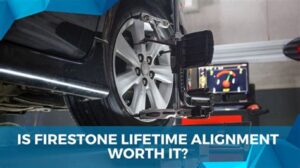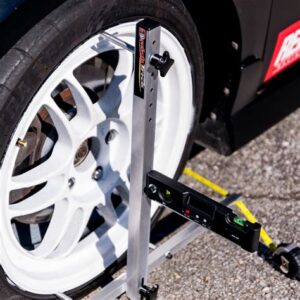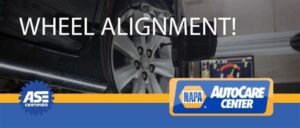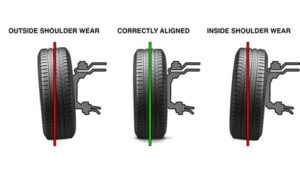Discover the importance of wheel alignment, signs of misalignment, its impact on tire wear, and the benefits of regular alignment for optimal vehicle performance.Is your car pulling to one side or are you noticing uneven tire wear? These could be signs that your vehicle’s wheel alignment is off. Proper wheel alignment is crucial for ensuring your car operates safely and efficiently. In this blog post, we’ll explore what wheel alignment entails, the telltale signs that your car may be due for an adjustment, and how misalignment impacts tire wear and overall vehicle performance. We’ll also discuss the importance of regular alignment checks and the numerous benefits of maintaining proper alignment for your car. Whether you’re a seasoned driver or a new car owner, understanding these aspects can save you time, money, and enhance your driving experience. Read on to discover everything you need to know about keeping your wheels in sync for a smoother ride.
Understanding Wheel Alignment
Wheel alignment refers to the adjustment of a vehicle’s suspension system, which connects a vehicle to its wheels. Proper alignment is crucial to ensure that the vehicle handles correctly, feels stable while driving, and operates safely. When a vehicle is properly aligned, the wheels point in the correct direction and are positioned optimally in relation to each other and the road.
The primary components that are adjusted during a wheel alignment include the camber, caster, and toe angles. These angles affect how the wheels and tires interact with the road surface and can significantly impact the vehicle’s performance and safety. Misalignment can lead to uneven tire wear, reduced fuel efficiency, and compromised handling.
Regularly checking and maintaining wheel alignment can prevent long-term damage to your vehicle and improve overall driveability. It is recommended to have your alignment checked when you notice any changes in steering or driving performance, or at l
Signs of Misalignment
Understanding the signs of misalignment in your vehicle can save you from costly repairs and unsafe driving conditions. If your wheels are not aligned properly, it can lead to a series of noticeable issues that can affect your driving experience.
Here are some common signs of misalignment to look out for:
- Uneven Tire Wear: If you notice that your tires are wearing down unevenly, this is a clear indicator that your wheels may be misaligned.
- Steering Wheel Off-Center: When driving straight, if your steering wheel is tilted to one side, this suggests possible misalignment issues.
- Pulling to One Side: If your car pulls to the left or right while driving on a flat, straight road, your wheels may not be aligned correctly.
- Vibration in the Steering Wheel: Excessive vibrations while driving can also be a sign of misalignment, often felt through the steering wheel.
- Noisy Tires: An increase in noise from the tires while driving can indicate uneven wear caused by misalignment.
If you’re experiencing any of these symptoms, it’s important not to ignore them. Addressing wheel alignment issues can lead to safer driving and prolong the life of your tires.
Regular checks can prevent small problems from becoming larger and more expensive in the future. Consulting a professional mechanic can help diagnose issues and recommend necessary adjustments for your vehicle.
By being aware of these signs of misalignment, you can make informed decisions about maintaining your car. Thus, ensuring that your vehicle runs smoothly and safely on the road.
Impact on Tire Wear
When it comes to vehicle maintenance, one of the most significant factors to consider is the impact of wheel alignment on tire wear. Proper alignment ensures that your tires make even contact with the road, promoting uniform wear and maximizing the lifespan of your tires. On the other hand, misalignment can lead to accelerated tire wear, which can become costly over time.
The following table summarizes how misalignment can affect your tires:
| Type of Misalignment | Effect on Tire Wear |
|---|---|
| Toe Misalignment | Causes uneven wear along the edges of the tire. |
| Camber Misalignment | Results in wear on one side of the tire, leading to potential early replacement. |
| caster Misalignment | May cause the vehicle to pull to one side, leading to uneven wear across the tread. |
Ignoring the importance of regular alignment checks can lead to serious consequences for your tires. Increased rolling resistance due to improper alignment not only shortens their lifespan but can also affect your vehicle’s fuel efficiency. Therefore, maintaining proper wheel alignment is key to prolongi
Importance of Regular Alignment
Regular wheel alignment is a crucial aspect of vehicle maintenance that directly influences your car’s performance, safety, and fuel efficiency. Proper alignment ensures that all four wheels are positioned correctly relative to each other and the road. This helps in achieving optimal traction, steering response, and overall vehicle stability.
When your car’s alignment is off, it can lead to a range of issues, including uneven tire wear, decreased handling capabilities, and compromised safety. For instance, tires that wear unevenly may need replacement sooner than expected, leading to an increase in maintenance costs. Regular alignment checks can prevent these issues from escalating, saving you both time and money in the long run.
Additionally, maintaining proper wheel alignment can enhance your fuel efficiency. A vehicle that is out of alignment can create excess drag, causing the engine to work harder. This results in lower miles per gallon, which can significantly impact your wallet over time. By ensuring your wheels are aligned, you not only improve the car’s handling but
Benefits of Proper Alignment
Proper wheel alignment is crucial for the overall performance of your vehicle. When your car is aligned correctly, you can enjoy a plethora of benefits that not only enhance driving comfort but also contribute to car longevity.
One of the primary benefits of ensuring proper alignment is improved tire wear. Misalignment can lead to uneven tire wear, causing the tires to wear out more quickly and necessitating frequent replacements. With correct alignment, tires wear evenly, which extends their life span and allows you to save money over time.
Additionally, proper alignment contributes to better fuel efficiency. When wheels are aligned, the vehicle rolls more freely, requiring less effort from the engine. This can result in better mileage, leading to less frequent trips to the gas station and improving your overall driving experience.
Moreover, maintaining a proper alignment can enhance vehicle handling and safety. A well-aligned vehicle will respond more effectively during turns, braking, and other maneuvers, reducing the risk of accidents. It also provides a smoother ride, making your journey more enjoyable for you and your passengers.
Frequently Asked Questions
What are the signs that my car needs alignment?
Common signs include uneven tire wear, car pulling to one side, and a steering wheel that is off-center.
How often should I have my car’s alignment checked?
It’s generally recommended to check your alignment every 6,000 miles, or as part of your regular maintenance during tire rotations.
What causes a car to go out of alignment?
Alignment can be affected by hitting potholes, curbs, or other road hazards, as well as normal wear and tear on suspension components.
Can misalignment affect my fuel efficiency?
Yes, misalignment can cause your car to work harder, which may lead to decreased fuel efficiency.
Is it safe to drive a car that needs alignment?
It’s not recommended, as misalignment can lead to difficult handling and increased tire wear, which may affect safety.
What is the difference between alignment and balancing?
Alignment adjusts the angles of the wheels to ensure they are parallel to each other and perpendicular to the ground, while balancing ensures that the weight of the tire and wheel is evenly distributed.
How much does a car alignment typically cost?
The cost of a car alignment can vary, but it usually ranges from $75 to $100 depending on the type of vehicle and the service location.





